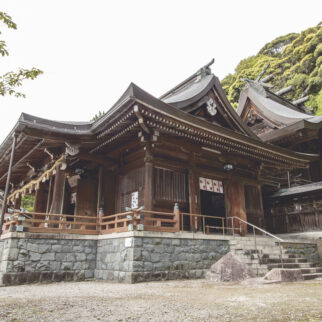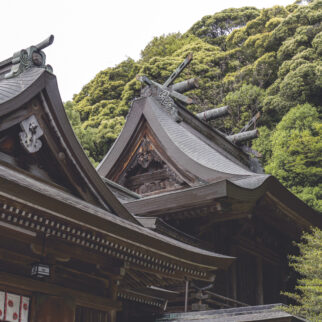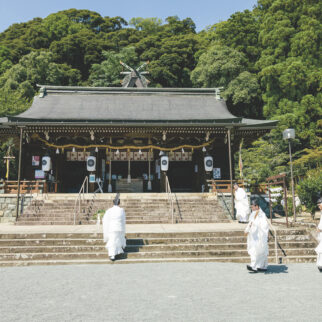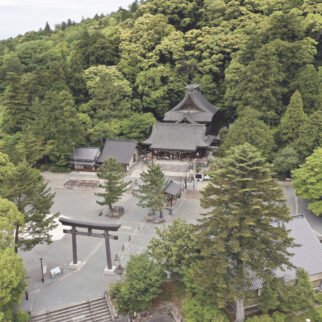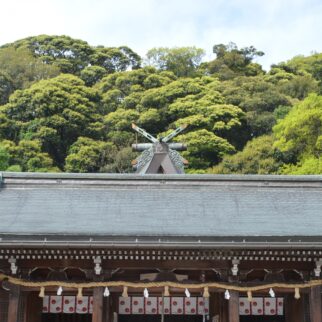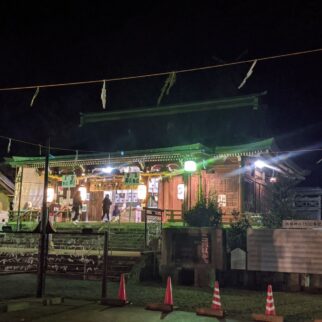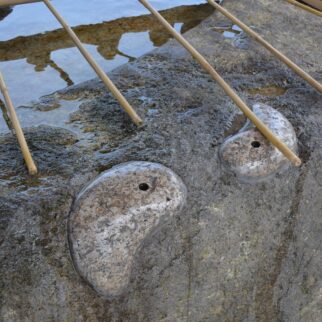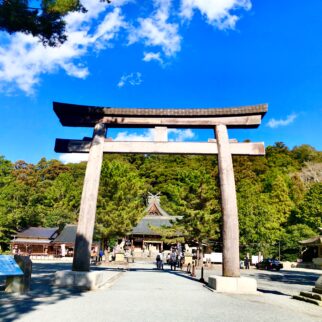 Sanbe Volcano that has nurtured
Sanbe Volcano that has nurtured
a bountiful way of life


The shrine of the god of literary and martial arts, the repose of souls, and victory
Mononobe Shrine



Umashimaji-no-Mikoto is revered Mononobe Shrine and it's said to be the founding father of the Mononobe clan, a local ruling family in the Yamato kingdom, is located in Kawai-cho, Oda City, where the Shizuma River flowing from Mt. Sanbe joins the Oshihara River. The shrine is majestic and has the largest Kasuga-zukuri style main shrine structure in Japan. Along with its association with the Mononobe clan, Mononobe Shrine also includes within its precinct the Ippeisha Shrine, said to enshrine one of the legendary sacred bottles that gave Mt. Sanbe its name; and thus, it is a shrine that has venerated Mt. Sanbe since ancient times.
The rice planting festival held in July involves a ceremony in which a young girl represents Sanbaisan, the goddess of the fields, who is invited down from Mt. Sanbe. The little goddess Sanbaisan is also associated with Sanohime (the “Princess of Agriculture”), represented in the old name of Mt. Sanbe, “Mt. Sahime.”

Umashimaji-no-Mikoto is revered Mononobe Shrine and it's said to be the founding father of the Mononobe clan, a local ruling family in the Yamato kingdom, is located in Kawai-cho, Oda City, where the Shizuma River flowing from Mt. Sanbe joins the Oshihara River. The shrine is majestic and has the largest Kasuga-zukuri style main shrine structure in Japan. Along with its association with the Mononobe clan, Mononobe Shrine also includes within its precinct the Ippeisha Shrine, said to enshrine one of the legendary sacred bottles that gave Mt. Sanbe its name; and thus, it is a shrine that has venerated Mt. Sanbe since ancient times.

- 1The legendary origin of Mt. Sanbe’s name
- According to the legend handed down at Mononobe Shrine, three bottles appeared from Mt. Sanbe and settled in Mononobe Shrine, Ukinunonoike Pond, and Sanbe Daimyojin Shrine (now Takada Hachimangu Shrine). These three bottles are the origin of the name “Sanbe” (“three bottles”).
- 2Sa no Hime
- The Sa in names likes “Satsuki” and “Saotome” means farming. There is a legend connected to Mt. Sahime, the old name of Mt. Sanbe, that a small goddess named Sahime appeared riding on the back of a wild goose and sowed seeds in the area around Mt. Sanbe. From this legend, Sahime became known as the goddess of agriculture.

- Mononobe Shrine
-
- 1545 Kawai, Kawai-cho, Oda City, Shimane, 694-0011
- TEL: 0854-82-0644









